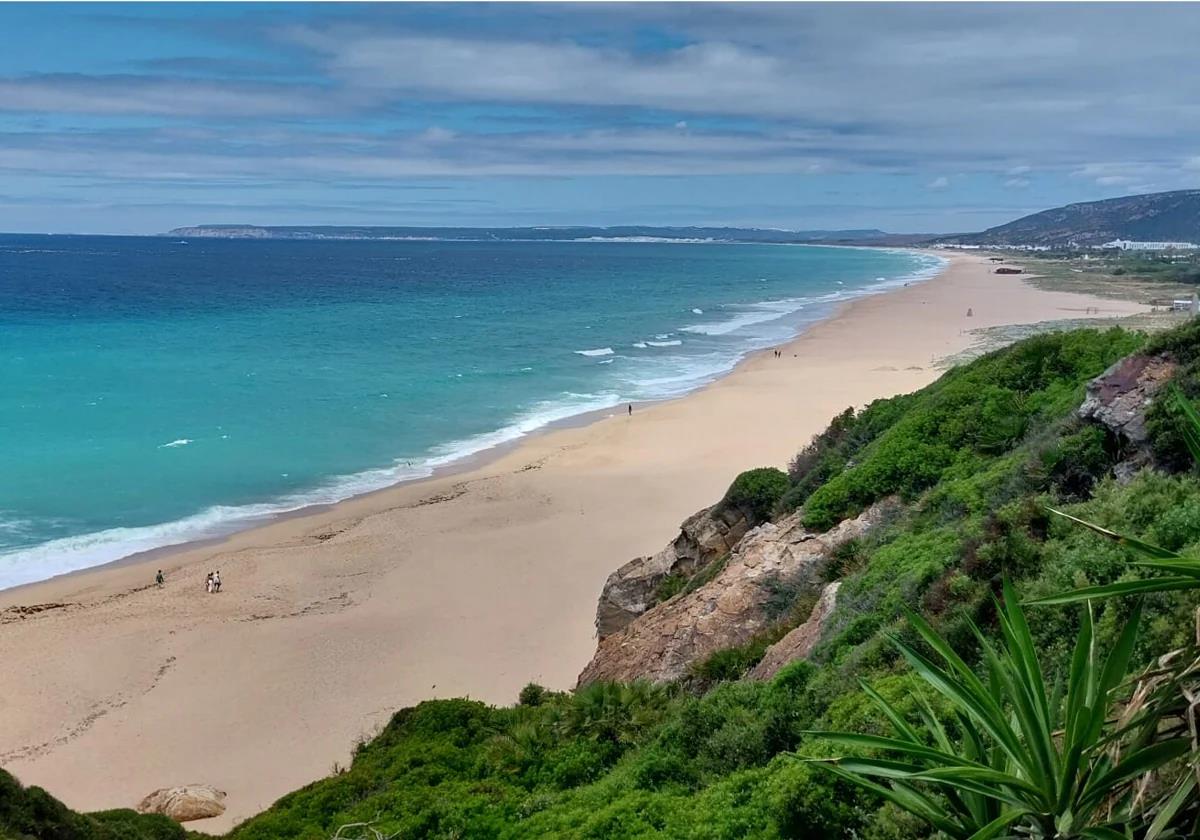Why has bathing been banned on a section of a popular Costa de la Luz beach?
There are just two places in the whole of the region where the Junta de Andalucía has deemed the water quality to be below the established safety level for safe bathing this summer
La Voz
Cadiz
Wednesday, 3 July 2024, 09:39
The presence of waste water discharge from the Atlanterra WWTP (wastewater treatment plant) has led to a ban on bathing at Atlanterra beach in Tarifa in Cadiz province. Bathing has been prohibited for 50 metres on either side of the discharge outlet.
The Junta de Andlaucía's Ministry of Health and Consumer Affairs has drawn up a report on the state of the region's entire coastline during the summer bathing season, which shows that the waters of Andalucía's beaches are within the established quality levels. However, there are two areas where bathing is not allowed in Andalucía: Atlanterra beach in Tarifa and the Presa de la Colada in Cordoba.
In Cadiz province alone, 81 samples were collected at 79 checkpoints in 58 bathing areas belonging to 16 municipalities, with Zahara de los Atunes beach being declared unfit.
The problem with Atlanterra's WWTP has been going on for a long time. Ecologists have denounced the deficiencies of this facility on many occasions , and both the Junta and Tarifa town hall have met on several occasions to start work on refurbishing the plant. For the moment bathing is prohibited. There is no set time limit to the ban. A similar ban happened a few weeks ago on Fuentebravía beach in El Puerto de Santa María, which is now open to bathing.
Water quality checks along Andalucía's beaches
The Junta's report on water quality at the region's beaches is based on analyses carried out by the Directorate-General for Public Health and Pharmaceutical Organisation. The Regional Ministry has monitored the 380 sampling points in 276 marine bathing areas and 24 other, natural bathing areas in Andalucía. The water samples were analysed to determine the different parameters required by current legislation, such as macroscopic parameters, transparency, colour, mineral oils, the presence of persistent foam and floating solids, organic remains and any other residues - glass, plastic, rubber, wood - that could affect the health of the water and is considered to be of public health interest.
Provincial results
By province, in Almeria a total of 91 samples were carried out at the 91 checkpoints, which are spread over 78 bathing areas in 13 municipalities in Almería.
In Granada, 38 samples were collected at 38 checkpoints in 30 bathing areas in 10 municipalities. In the province of Huelva, 50 samples were taken at 50 checkpoints, spread over 25 bathing areas in nine municipalities. Finally, in the province of Malaga, a total of 97 samplings were carried out at 97 checkpoints, spread over 85 bathing areas in 14 municipalities.
In the case of inland bathing areas, sampling was carried out at the Cela reservoir in Lúcar, Almeria; in the province of Cordoba at the Breña II reservoir and at the Colada dam, the latter declared unfit due to the presence of cyanobacteria potentially toxic to public health.
In Granada, the waters of the reservoirs of Cubillas in Albolote, Bermejales in Arenas del Rey, Negratín reservoir in Cuevas del Campo and the Fuencaliente springs in the municipalities of Huéscar and Orce, and the Tobar river in Los Guájares were analysed. In Cadiz, the Arcos de la Frontera reservoir, the Bornos reservoir and the Arroyomolinos river in Zahara were checked.
In Malaga the Conde del Guadalhorce reservoir in Ardales and the Hedionda spring in Casares were sampled. In Jaén the Encinarejo reservoir and Jándula river (both in Andújar), the Rumblar reservoir in Baños de la Encina, the river Borosa in Santiago-Pontones, the Arroyo de los Molinos and the river Guadalimar (both in Siles), the river Aguascebas in Villacarrillo, and the river Guadalquivir as it passes through Villanueva del Arzobispo and Cazorla.
In Seville, the water of the Rivera del Huéznar in San Nicolás del Puerto, has also been analysed and declared fit for bathing. This report on the health quality of the water, which indicates its suitability and, where appropriate, provides information on recommendations for, or complete bans on bathing will be issued periodically every fortnight throughout the summer season and will be available to the public on the website of the Junta's Ministry of Health and Consumer Affairs until the end of the bathing season on 30 September.
